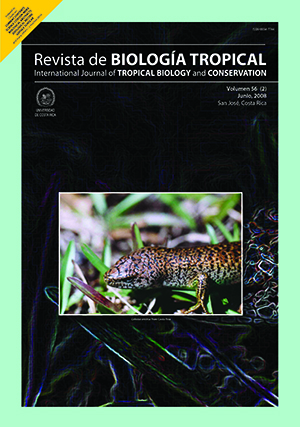Abstract
Changes in salinity, temperature and irradiance during wet and dry seasons have induced metabolic versatility in cyanobacteria from saline environments. Cyanobacteria from these environments have biotechnological potential for the production of metabolites with pharmaceutical and indus-trial interest. We studied the growth, dry mass and metabolite production of the cyanobacterium Synechococcussp. MOF-03 in function of irradiance (78, 156 and 234 μmol q m-2 s-1). All batch cultures were maintained by triplicate in constant aeration, 12:12 h photoperiod, 30 ±2ºC and 35‰. Maximum values of protein, carbohy-drates and lipids, of 530.19 ±11.16, 408.94 ±4.27 and 56.20 ±1.17 μg ml-1, respectively, were achieved at 78 μmol q m-2 s-1. Pigments, analyzed by HPLC, showed maximum values at 78 μmol q m-2 s-1 for chlorophyll awith 7.72 ±0.16 μg ml-1, and at 234 μmol q m-2 s-1 for β-carotene and zeaxanthin with 0.70 ±0.01 and 0.67 ±0.05 μg ml-1. Chlorophyll a:β-carotene ratio decreased from 17.15 to 6.91 at 78 and 234 μmol q m-2 s-1; whereas β-carotene:zeaxanthin ratio showed no changes between 78 and 156 μmol q m-2 s-1, around 1.21, and decreased at 234 μmol q m-2 s-1, to 1.04. Also, this cyanobacterium produced the greatest cell density and dry mass at 156 μmol q m-2 s-1, with 406.13 ±21.74 x106 cell ml-1 and 1.49 ±0.11 mg ml-1, respectively. Exopolysaccharide production was stable between 156 y 234 μmol q m-2 s-1, around 110 μg ml-1. This Synechococcus strain shows a great potential for the production of enriched biomass with high commercial value metabolites.
Comments

This work is licensed under a Creative Commons Attribution 4.0 International License.
Copyright (c) 2008 Revista de Biología Tropical






